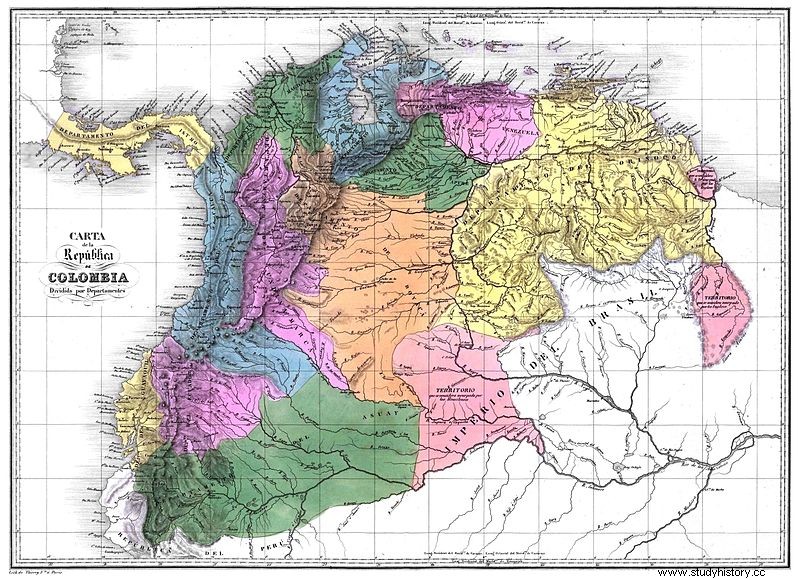Well yes, again… with one of those difficult questions to answer or, at least, uncomfortable. I suppose that some of you, and I hope there are not many of you, will brand me as superficial or simplistic because of the arguments put forward in this article, but this is not an essay or a doctoral thesis, these are questions that, as a mere history buff, I always I have considered and now I share with you. I understand that these are very difficult questions and that if all the factors and protagonists were detailed, several volumes would be necessary to have a more precise answer. In this case, and regardless of the current situation, I am going to focus on the United States and Gran Colombia (the closest thing to Simón Bolívar's attempt to build a South American Empire):potentially and originally two nations with a mix of superpowers, but whose destinations were very different.

After the Declaration of Independence of the United States On July 4, 1776, the Thirteen British Colonies (New Hampshire, Massachusetts, Rhode Island, Connecticut, New York, New Jersey, Pennsylvania, Delaware, Maryland, Virginia, North Carolina, South Carolina, and Georgia) segregated from the British Crown. In 1789, George Washington was appointed president. .

On February 15, 1819, at the Congress of Angostura , the Gran Colombia was created (occupied the current Colombia, Venezuela, Ecuador and Panama as well as small portions of land that today belong to Costa Rica, Peru, Brazil, Guyana and Nicaragua) independent from the Spanish Crown. In 1821, Simón Bolívar was appointed president. .
Several similarities can be established between both events:they were colonies of European empires, made up of extensive and rich territories, the insurgents against the metropolis were the settlers/criollos, the natives were barely involved and, furthermore, the ideologue of South American independence was the Caracas Francisco de Miranda who had suckled and lived the independence of the USA. So far, very similar wickerwork and similar foundations.
So what happened?
- The USA was constituted as a single territory, with a common policy and even with a civil war (Secession War) they remained united. They are attributed to Benjamin Franklin these words:«Yes, we all have to stay together, or almost certainly, we are all going to hang separately «. Gran Colombia only remained united for about 10 years due to disputes between its leaders and between the territories that formed it.
- The racial segregation of the settlers/criollos with respect to the natives. In the US, the native population was such a minority, and even lived apart from the rest of society, that they did not pose any problem. In South America their number was much greater and they were hardly participants in the resulting governments. These Creoles (of European descent, but born in the former Spanish territories of America), the main people responsible for the independence movements in these territories, gathered political and economic power in their hands -albeit, in the name of the sovereign people- and they stopped "selling themselves" as the liberators against the oppression of the Spaniards. From them descends the oligarchy that dedicated itself to dividing and subdividing these territories and that continues to direct their destinies.
I have given Gran Colombia as an example, but the idea of Miranda and Bolívar was an Empire that encompassed all the colonies of the Spanish crown.
